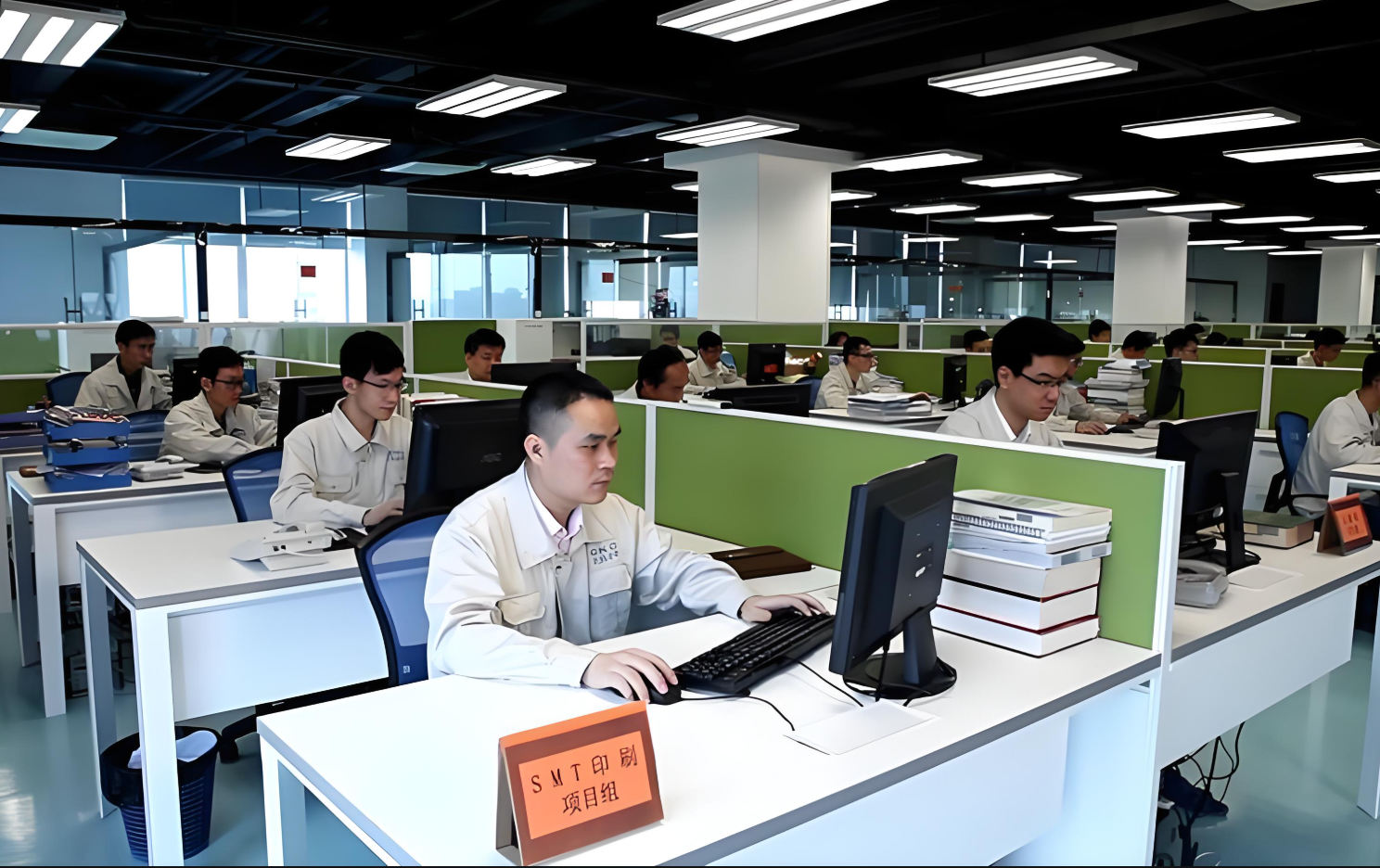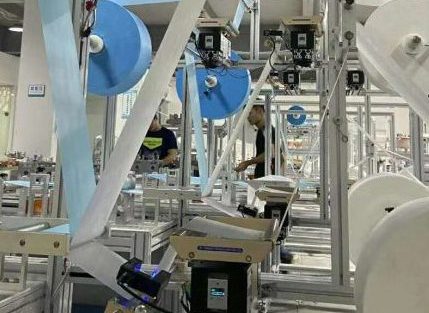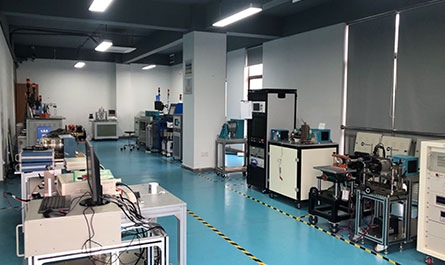The Power Behind Precision Exploring Hysteresis Brakes Dynamometers and Next-Gen Motor Testing Solutions
In the world of industrial machinery and advanced motor systems, precision isn’t just a luxury—it’s a necessity. From automotive R\u0026D labs to cutting-edge aerospace manufacturing floors, the demand for reliable, accurate, and durable testing equipment has never been higher. This is where hysteresis-based technologies and motor testing systems shine, offering unmatched performance in torque control, load simulation, and energy efficiency. Let’s dive into the innovations reshaping the industry. Hysteresis Brakes: The Silent Workhorses of Controlled Deceleration Imagine a braking system that operates without physical contact, eliminating wear and tear while delivering consistent torque. Hysteresis brakes achieve exactly this by leveraging electromagnetic principles. When SG Transmission interacts with a hysteresis disc, it generates resistance purely through magnetic flux, enabling smooth, vibration-free deceleration.  These brakes are indispensable in applications requiring precise tension control, such as wire winding machines, textile manufacturing, or even high-speed robotic arms. Unlike friction-based brakes, hysteresis variants require no maintenance for worn pads or adjustments, making them ideal for mission-critical environments like semiconductor production lines. Their ability to handle rapid cycling without performance degradation has also made them a favorite in renewable energy systems, such as wind turbine pitch control mechanisms. Hysteresis Dynamometers: Measuring Performance Without Compromise When testing motors, engines, or turbines, dynamometers serve as the ultimate truth-tellers. Hysteresis dynamometers stand out by offering non-contact torque measurement, combining the principles of hysteresis braking with advanced sensor technology. Whether evaluating a 10kW electric vehicle motor or a 5MW industrial turbine, these devices provide load simulation with near-zero inertia interference. Key advantages include: – Seamless integration with regenerative power systems, channeling absorbed energy back into the grid – Sub-1% torque accuracy even at ultra-low RPM ranges – Silent operation, critical for NVH (Noise, Vibration, Harshness) testing in automotive R\u0026D – Immunity to temperature fluctuations that plague hydraulic alternatives Aerospace engineers particularly value hysteresis dynamometers for testing auxiliary power units (APUs), where consistent performance under extreme conditions is non-negotiable. Hysteresis Clutches: Precision Meets Endurance In applications demanding precise torque transmission without mechanical linkage, hysteresis clutches are game-changers. By using a rotor and stator separated by an air gap, these clutches transfer torque magnetically, enabling: – Infinitely variable speed control – Zero backlash during engagement – Overload protection via automatic slip under excess torque Industrial robotics benefit immensely from this technology, especially in collaborative robots (cobots) where human safety depends on instantaneous torque response. Packaging machinery also leverages hysteresis clutches for tension-sensitive processes like labeling pharmaceutical vials or sealing food containers. Motor Dynamometers: Beyond Basic Testing Modern motor dynamometers are no longer mere testing tools—they’re complete evaluation ecosystems. Advanced units now incorporate: – Real-time efficiency mapping for ISO 17025-compliant certifications – AI-driven predictive maintenance analytics – Multi-axis vibration spectrum analysis – Thermal imaging integration for hotspot detection Take the example of EV motor testing: next-gen dynamometers simulate everything from steep mountain inclines to sudden regenerative braking events, all while capturing data at microsecond intervals. This capability accelerates development cycles while ensuring compliance with global standards like UN R85 or SAE J2907. Motor Test Equipment: Building the Bridge Between Prototype and Production A comprehensive motor test system today might include: 1. Hysteresis-based load banks for dynamic load profiling 2. High-resolution encoder feedback systems 3. IP67-rated environmental chambers for thermal stress testing 4. Power quality analyzers assessing harmonic distortion 5. Cloud-connected data loggers for remote monitoring In wind energy applications, such systems validate generators under simulated 20-year lifespan conditions within weeks. For appliance manufacturers, they ensure whisper-quiet operation of HVAC blower motors through precise imbalance detection. The Evolution of Motor Test Systems Integration is the new frontier. Leading-edge motor test systems now combine hysteresis components with: – Digital twin simulations for virtual-physical hybrid testing – Augmented reality interfaces for technician guidance – Blockchain-secured test result authentication – Edge computing nodes for localized data processing A European automotive OEM recently reduced its motor validation time by 40% using an integrated hysteresis dynamometer system with machine learning algorithms. The system automatically identifies anomalous torque ripple patterns invisible to traditional FFT analysis. Why Hysteresis Technology Outperforms Alternatives Compared to powder brakes or hydraulic systems, hysteresis solutions offer: – Longer service life (50,000+ hours MTBF in continuous operation) – Environmentally friendly operation (no oil leaks or consumable parts) – Instant torque response (sub-10ms adjustment times)
These brakes are indispensable in applications requiring precise tension control, such as wire winding machines, textile manufacturing, or even high-speed robotic arms. Unlike friction-based brakes, hysteresis variants require no maintenance for worn pads or adjustments, making them ideal for mission-critical environments like semiconductor production lines. Their ability to handle rapid cycling without performance degradation has also made them a favorite in renewable energy systems, such as wind turbine pitch control mechanisms. Hysteresis Dynamometers: Measuring Performance Without Compromise When testing motors, engines, or turbines, dynamometers serve as the ultimate truth-tellers. Hysteresis dynamometers stand out by offering non-contact torque measurement, combining the principles of hysteresis braking with advanced sensor technology. Whether evaluating a 10kW electric vehicle motor or a 5MW industrial turbine, these devices provide load simulation with near-zero inertia interference. Key advantages include: – Seamless integration with regenerative power systems, channeling absorbed energy back into the grid – Sub-1% torque accuracy even at ultra-low RPM ranges – Silent operation, critical for NVH (Noise, Vibration, Harshness) testing in automotive R\u0026D – Immunity to temperature fluctuations that plague hydraulic alternatives Aerospace engineers particularly value hysteresis dynamometers for testing auxiliary power units (APUs), where consistent performance under extreme conditions is non-negotiable. Hysteresis Clutches: Precision Meets Endurance In applications demanding precise torque transmission without mechanical linkage, hysteresis clutches are game-changers. By using a rotor and stator separated by an air gap, these clutches transfer torque magnetically, enabling: – Infinitely variable speed control – Zero backlash during engagement – Overload protection via automatic slip under excess torque Industrial robotics benefit immensely from this technology, especially in collaborative robots (cobots) where human safety depends on instantaneous torque response. Packaging machinery also leverages hysteresis clutches for tension-sensitive processes like labeling pharmaceutical vials or sealing food containers. Motor Dynamometers: Beyond Basic Testing Modern motor dynamometers are no longer mere testing tools—they’re complete evaluation ecosystems. Advanced units now incorporate: – Real-time efficiency mapping for ISO 17025-compliant certifications – AI-driven predictive maintenance analytics – Multi-axis vibration spectrum analysis – Thermal imaging integration for hotspot detection Take the example of EV motor testing: next-gen dynamometers simulate everything from steep mountain inclines to sudden regenerative braking events, all while capturing data at microsecond intervals. This capability accelerates development cycles while ensuring compliance with global standards like UN R85 or SAE J2907. Motor Test Equipment: Building the Bridge Between Prototype and Production A comprehensive motor test system today might include: 1. Hysteresis-based load banks for dynamic load profiling 2. High-resolution encoder feedback systems 3. IP67-rated environmental chambers for thermal stress testing 4. Power quality analyzers assessing harmonic distortion 5. Cloud-connected data loggers for remote monitoring In wind energy applications, such systems validate generators under simulated 20-year lifespan conditions within weeks. For appliance manufacturers, they ensure whisper-quiet operation of HVAC blower motors through precise imbalance detection. The Evolution of Motor Test Systems Integration is the new frontier. Leading-edge motor test systems now combine hysteresis components with: – Digital twin simulations for virtual-physical hybrid testing – Augmented reality interfaces for technician guidance – Blockchain-secured test result authentication – Edge computing nodes for localized data processing A European automotive OEM recently reduced its motor validation time by 40% using an integrated hysteresis dynamometer system with machine learning algorithms. The system automatically identifies anomalous torque ripple patterns invisible to traditional FFT analysis. Why Hysteresis Technology Outperforms Alternatives Compared to powder brakes or hydraulic systems, hysteresis solutions offer: – Longer service life (50,000+ hours MTBF in continuous operation) – Environmentally friendly operation (no oil leaks or consumable parts) – Instant torque response (sub-10ms adjustment times)  – Linear torque proportionality across entire speed ranges A textile manufacturer switching to hysteresis brakes reported a 70% reduction in production downtime caused by brake maintenance. Similarly, a drone propulsion tester achieved 0.2% repeatability error in thrust measurements using a hysteresis-based dynamometer setup. Customization: Tailoring Solutions to Industry Needs No two applications are identical. Progressive manufacturers now offer: – Explosion-proof hysteresis clutches for oil \u0026 gas applications – Vacuum-rated dynamometers for satellite reaction wheel testing – FDA-compliant test rigs for medical pump motors
– Linear torque proportionality across entire speed ranges A textile manufacturer switching to hysteresis brakes reported a 70% reduction in production downtime caused by brake maintenance. Similarly, a drone propulsion tester achieved 0.2% repeatability error in thrust measurements using a hysteresis-based dynamometer setup. Customization: Tailoring Solutions to Industry Needs No two applications are identical. Progressive manufacturers now offer: – Explosion-proof hysteresis clutches for oil \u0026 gas applications – Vacuum-rated dynamometers for satellite reaction wheel testing – FDA-compliant test rigs for medical pump motors  – MIL-STD-810G validated systems for defense contractors Case in point: A submarine builder required a seawater-resistant dynamometer to test thrusters without traditional shaft seals. The solution combined a hysteresis absorption unit with a hermetically sealed torque flange, eliminating leakage risks entirely. Sustainability Through Smart Engineering Hysteresis systems contribute to greener operations by: – Recovering up to 90% of absorbed energy via regenerative inverters – Eliminating hydraulic oil disposal concerns – Enabling precise efficiency grading for energy-star certifications A solar tracker manufacturer achieved 25% longer daily power generation by using hysteresis brakes with light-tracking algorithms, optimizing panel angles without mechanical lash.
– MIL-STD-810G validated systems for defense contractors Case in point: A submarine builder required a seawater-resistant dynamometer to test thrusters without traditional shaft seals. The solution combined a hysteresis absorption unit with a hermetically sealed torque flange, eliminating leakage risks entirely. Sustainability Through Smart Engineering Hysteresis systems contribute to greener operations by: – Recovering up to 90% of absorbed energy via regenerative inverters – Eliminating hydraulic oil disposal concerns – Enabling precise efficiency grading for energy-star certifications A solar tracker manufacturer achieved 25% longer daily power generation by using hysteresis brakes with light-tracking algorithms, optimizing panel angles without mechanical lash.  The Road Ahead: IoT and Industry 4.0 Integration Future-forward test systems are embracing: – OPC UA compatibility for plug-and-play Industry 4.0 integration – Predictive torque calibration via digital fingerprinting – Cybersecurity-hardened data pipelines – Hysteresis units with embedded IIoT sensors for real-time health monitoring Imagine a global motor factory where every test station’s hysteresis dynamometer autonomously adjusts calibration based on live atmospheric pressure data—this is already happening in high-altitude UAV motor production facilities. Conclusion: Powering Innovation with Confidence From the nano-scale motors in medical devices to the megawatt generators powering cities, hysteresis-based technologies and advanced motor test systems form the backbone of modern engineering. They enable innovators to push boundaries while ensuring reliability, efficiency, and compliance. As industries accelerate toward electrification and automation, these solutions will continue to evolve, delivering the precision that tomorrow’s breakthroughs demand. For engineers specifying new test equipment or upgrading existing infrastructure, the message is clear: embracing hysteresis technology isn’t just about keeping pace—it’s about redefining what’s possible in motor testing and control.
The Road Ahead: IoT and Industry 4.0 Integration Future-forward test systems are embracing: – OPC UA compatibility for plug-and-play Industry 4.0 integration – Predictive torque calibration via digital fingerprinting – Cybersecurity-hardened data pipelines – Hysteresis units with embedded IIoT sensors for real-time health monitoring Imagine a global motor factory where every test station’s hysteresis dynamometer autonomously adjusts calibration based on live atmospheric pressure data—this is already happening in high-altitude UAV motor production facilities. Conclusion: Powering Innovation with Confidence From the nano-scale motors in medical devices to the megawatt generators powering cities, hysteresis-based technologies and advanced motor test systems form the backbone of modern engineering. They enable innovators to push boundaries while ensuring reliability, efficiency, and compliance. As industries accelerate toward electrification and automation, these solutions will continue to evolve, delivering the precision that tomorrow’s breakthroughs demand. For engineers specifying new test equipment or upgrading existing infrastructure, the message is clear: embracing hysteresis technology isn’t just about keeping pace—it’s about redefining what’s possible in motor testing and control.